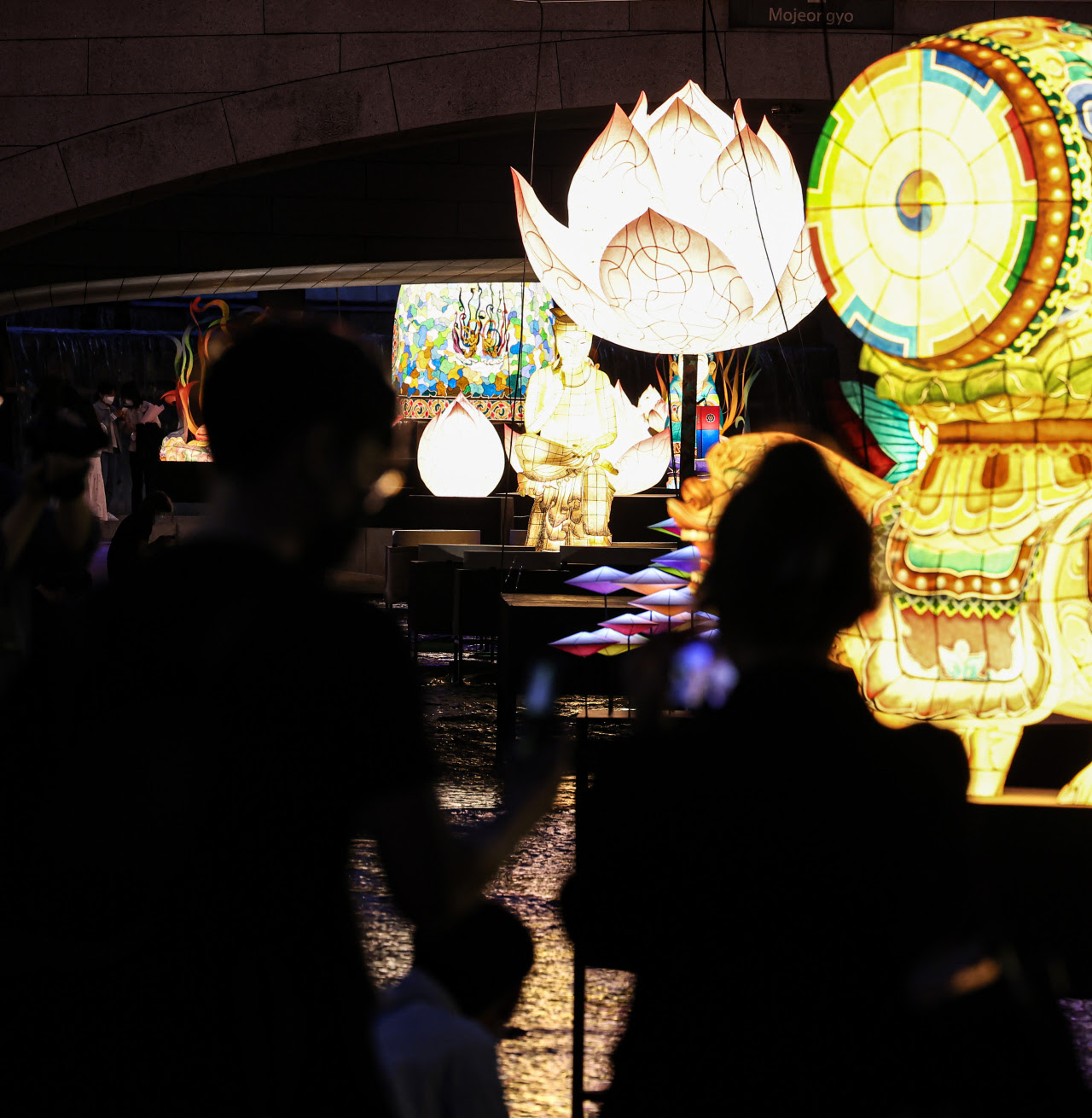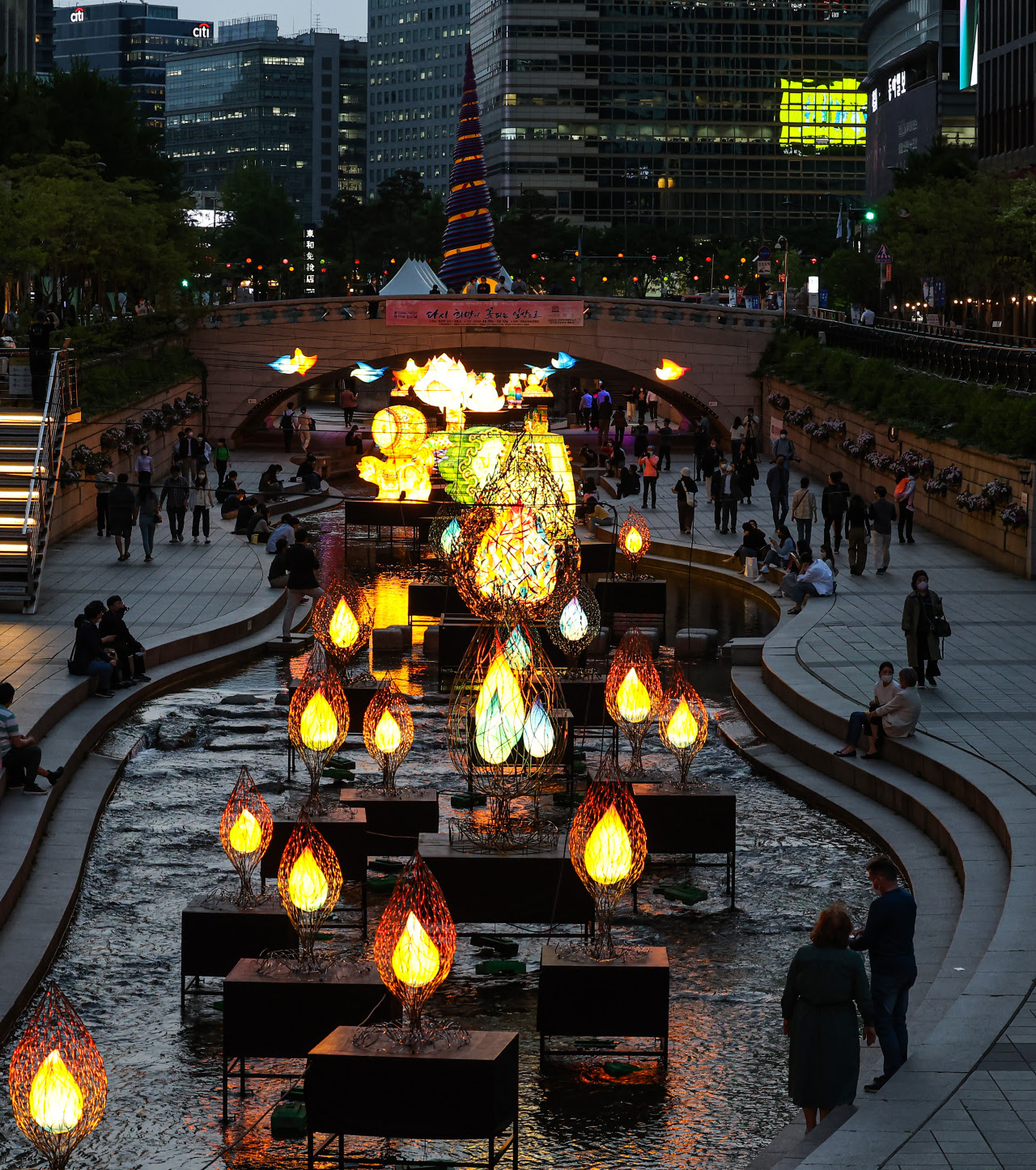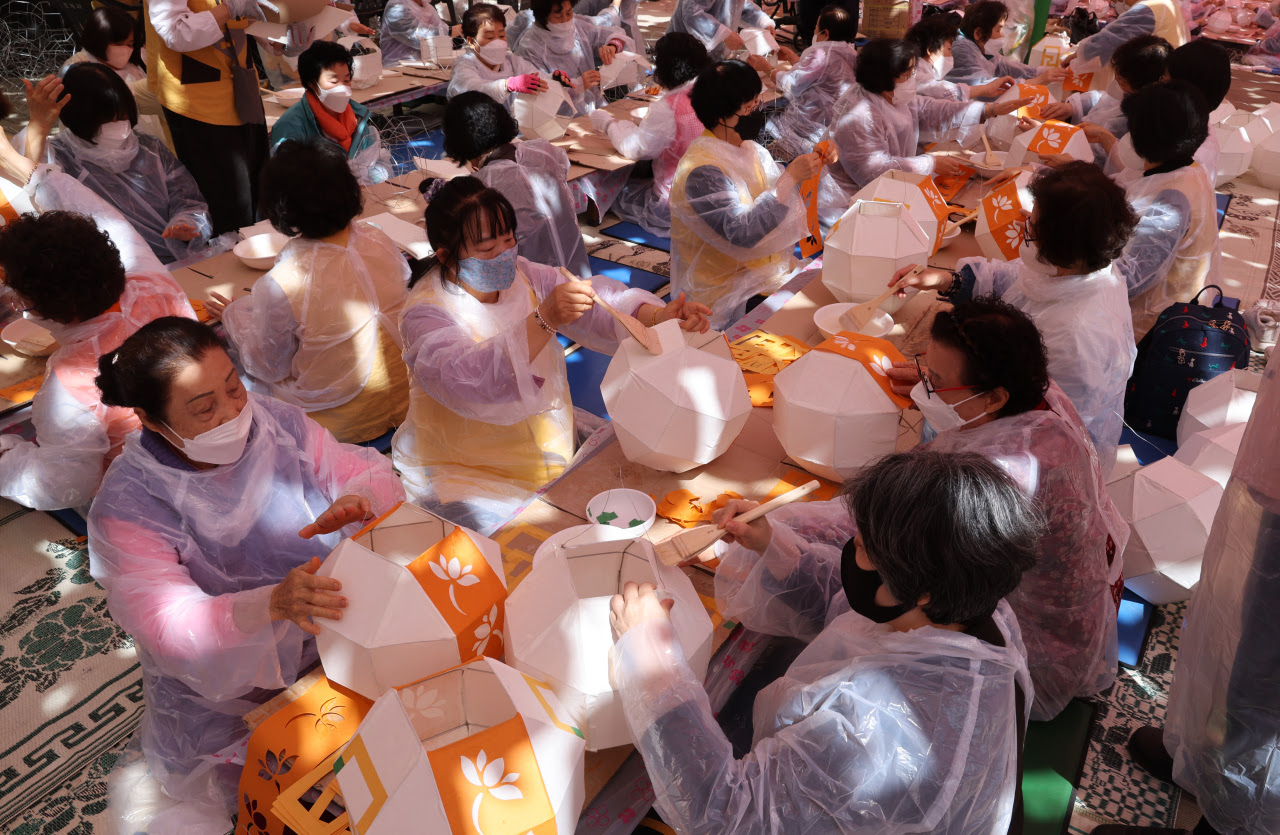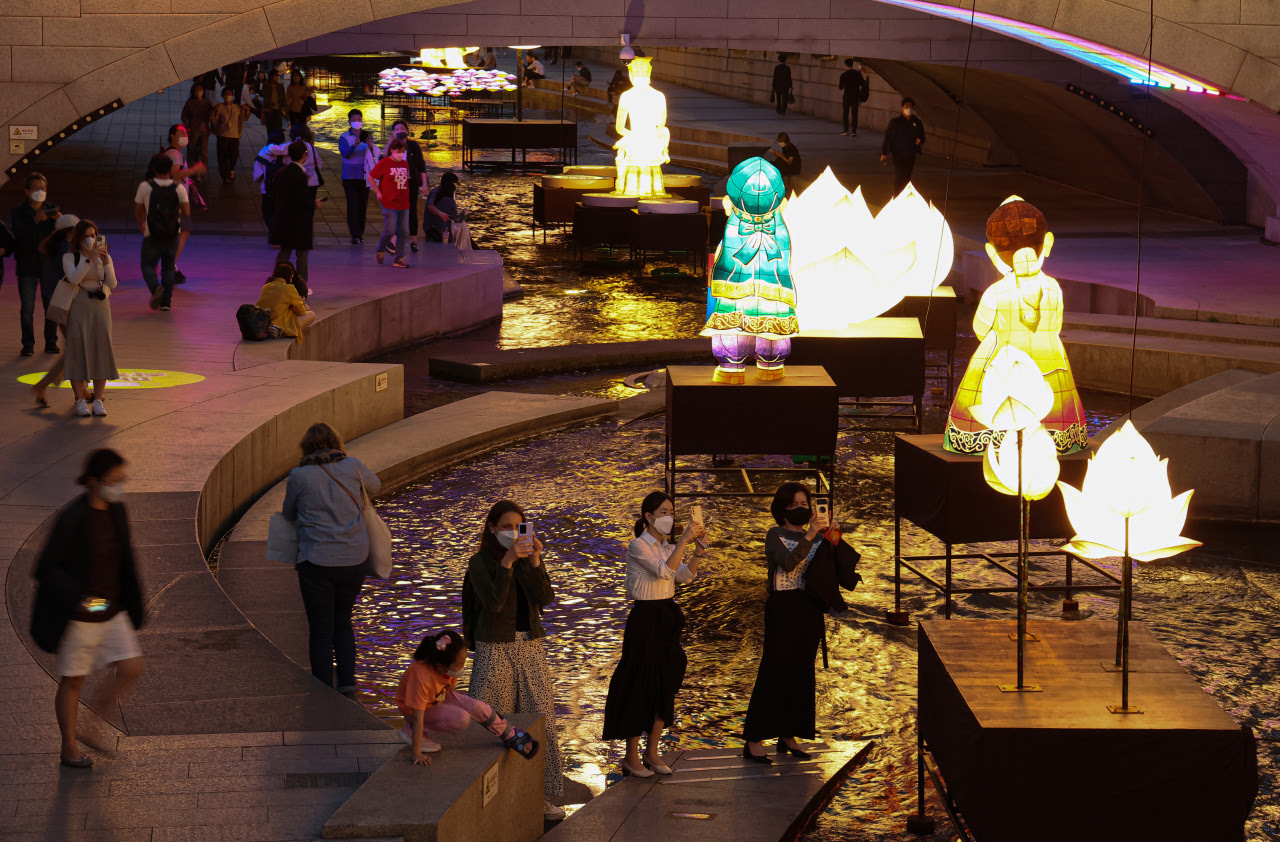
UNESCO-listed cultural heritage makes colorful return, marking Buddha’s birthday
 |
|
A visitor at Cheonggye Stream takes a photo of the traditional lanterns on display on Tuesday. (Yonhap)
|
Although the official Yeondeunghoe, the lantern lighting festival, will be held for three days starting Friday, the festive mood will continue on with most lanterns staying lit through May 10.
In December 2020, Yeondeunghoe was officially inscribed on the United Nations Educational, Scientific and Cultural Organization’s list of Intangible Cultural Heritage of Humanity. This year marks the first Yeondeunghoe after the UNESCO listing, since the Buddhist community canceled the parade for two years due to the pandemic.
 |
|
“Exhibition of Traditional Lanterns” at Cheonggye Stream, central Seoul, is seen on Tuesday evening. (Yonhap)
|
“Exhibition of Traditional Lanterns” showcases lotus lanterns made of hanji, traditional paper made from mulberry trees, as well as lanterns in various shapes and figures that symbolize the spirit of Buddhism. The exhibitions are taking place at two Buddhist temples — Jogyesa in downtown Seoul and Bongeunsa in southern Seoul — and along the Cheonggye Stream, which courses through central Seoul. The lanterns at Cheonggye Stream will stay lit from 5:30 p.m. to midnight daily.
The main events will be held on Saturday.
 |
|
People make lotus lanterns for Yeondeunghoe on Wednesday at Jogyesa. (Yonhap)
|
One of the highlights of the celebrations, “Lantern Parade,” will take place from 7 p.m. to 9 p.m., starting at Heunginjimun near Dongdaemun Station and make its way through the central downtown area of Jongno-gu before ending at Jogyesa. Those hoping to catch the parade can get off the subway at Jongno 3-ga, Jongno 5-ga and Jonggak stations.
Saturday’s events will come to a close with “Hoehyang Hanmadang,” a post-parade celebration, which will be held at the Jonggak intersection from 9 p.m. to 10:30 p.m.
 |
|
“Exhibition of Traditional Lanterns” at Cheonggye Stream, central Seoul, is seen on Tuesday evening. (Yonhap)
|
Events on Saturday will be broadcast live for seven hours on two Buddhist television channels, BTN and BBS, and their respective YouTube channels.
Traditional cultural events and performances, such as lantern-making sessions and “madangnori” — outdoor theatrical performances that actively engages the audience — will be held around Jogyesa on Sunday, from noon to 7 p.m.
The final celebration, “Yeondeungnori” will be held in front of Jogyesa from 7 p.m. to 9 p.m. on Sunday.
On May 8, all temples throughout the country will be holding ceremonies to celebrate Buddha’s birthday.
By Kim Hae-yeon (hykim@heraldcorp.com)











